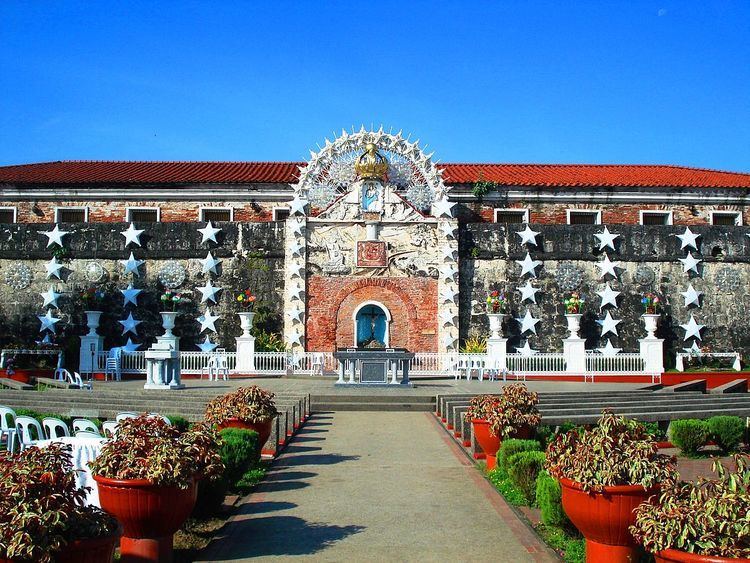 | ||
The Government of Zamboanga City, also known as the Zamboanga City Government is the local government unit in-charge of the City of Zamboanga. It is a mayor-council form of government supervised directly by the President of the Philippines and the Secretary of the Interior and Local Government.
Contents
- Legislative Department
- Executive Department
- Republic of Zamboanga
- Under Moro Province
- City Mayors
- Municipal Presidents
- References
The city government has three interdependent branches: the legislative branch, the executive branch, and the judicial branch. The powers of the branches are vested by the 1991 Local Government Code of the Philippines in the following:
Legislative Department
The legislative power of the city is vested in the unicameral Sangguniang Panglungsod. It is composed of:
The elected members can be re-elected but they may not run for a fourth consecutive term.
When a vacancy arises in the Sanggunian, the President of the Philippines shall appoint to fill in the vacancy. In case of vacancy in the representation of the youth and the barangay in the Sanggunian, the said vacancy shall be filled automatically by the official next in rank of the organization concerned.
Executive Department
The executive power is vested in the Mayor. The current executive branch is headed by Mayor Maria Isabelle Climaco Salazar of the Liberal Party. He/she is elected by popular vote to a term of three years. The mayor can be re-elected but he/she may not run for a fourth consecutive term.
The second highest official, Vice-Mayor Cesar Iturralde is also elected by popular vote. The Vice-Mayor is first in line to succession if the office of the Mayor is vacant. He/she is the presiding officer of the Sangguniang Panglungsod.
The mayor is assisted in acting out his/her duties by the following:
Republic of Zamboanga
The Republic of Zamboanga's declared sovereignty lasted from May 18, 1899 until November 16, 1899, wherein its revolutionary government and chosen President, Vicente Álvarez, who led the liberation of the Zamboangueños from the tenuous grip of the retreating Spanish military, along with his victorious troops, exercised de facto sovereignty over administrative functions and military control within their new country territory and was not subordinate or subject to any other government or authority in the Philippines.
Álvarez proclaimed his new Republic of Zamboanga had rule over the entire islands of Mindanao, Basilan, and Sulu - effectively the entire southern Philippines. His claim was grandiose. In reality, the republic's sovereignty extended only over the existing premises of ancient Zamboanga, which can be estimated to be about the same size as present-day Zamboanga City is.
Under Moro Province
In March 1903, Arquiza's government ended and was replaced by a new U.S. governor, also effectively ending the Republic of Zamboanga.
Zamboanga is made capital of consolidated Mindanao, Basilan,& Sulu Archipelago, after abolition of the Republic. The Moro Province had 5 districts: Sulu, Zamboanga, Lanao, Cotabato, and Davao.
City Mayors
On recommendation of Governor John J. Pershing, the Legislative Council of the Moro Province passed on September 15, 1911, Act No. 272, converting the municipality of Zamboanga into a city with a commission form of government. Its municipal board consisted of a mayor and two commissioners.
On February 26, 1937, the City Charter of Zamboanga became effective and the new city government was inaugurated headed by a mayor appointed by the President of the Philippine Commonwealth.
With the passage of Republic Act No. 1210 on April 29, 1955, the position of mayor became elective and the post of vice-mayor was created.
Note: The first column consecutively numbers the individuals who have served as chief executive (either mayor or municipal president) of Zamboanga City, while the second column consecutively numbers the individuals who have served as city mayor.
Municipal Presidents
When the Department of Mindanao and Sulu replaced the Moro Province in 1914, the City was reverted to municipality status under the supervision of the province of Zamboanga.
Note: The first column consecutively numbers the individuals who have served as chief executive (either mayor or municipal president) of Zamboanga City, while the second column consecutively numbers the individuals who have served as municipal president.
